Use of lenses for correcting vision
The diagram below shows the cross section of a human eye.
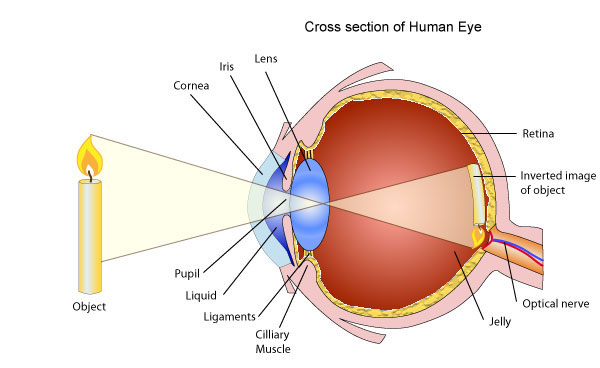
Light from an object passes through the cornea which is a transparent dome like structure covering the iris. The light rays are refracted by the cornea onto the lens. The light rays are refracted a second time whilst passing through the lens and focussed onto the retina – the light sensitive part of the eye. The image formed on the retina is inverted (upside down) and real (the light rays travel through the image).
The image is interpreted the right way up by the brain which is connected to the eye via the optic nerve.
The shape of the eye is very important in ensuring the objects we see are in focus. A person with normal vision can focus clearly on objects both near and far, this is because light from the object is precisely focussed onto the retina at the focal point. However, for some people focussing on objects far away or close can result in a blurred image forming. These defects in vision are referred to as long and short sight.
Long sight
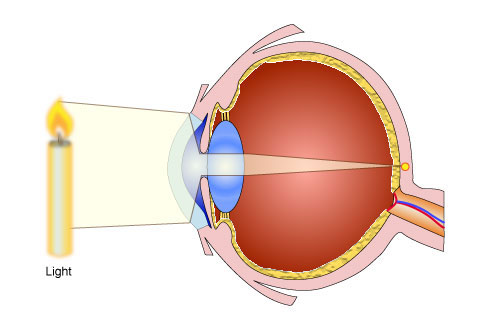 |
| A person who is long sighted can focus clearly on distant objects but cannot focus on near objects. This is because the eyeball is too short. Light from near objects is focussed at a point behind the retina resulting in a blurred image. |
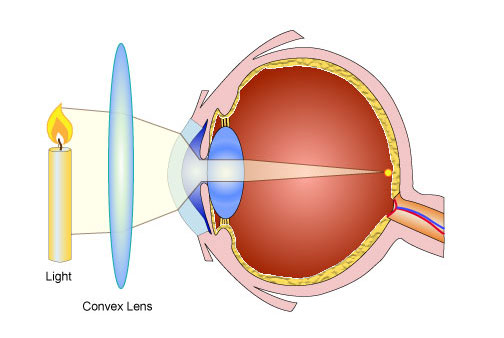 |
| This defect can be corrected by wearing a convex (converging) spectacle lens. The rays of light from a near object are converged before entering the eye so that the cornea and eye lens can direct the focal point onto the retina. |
Short sight
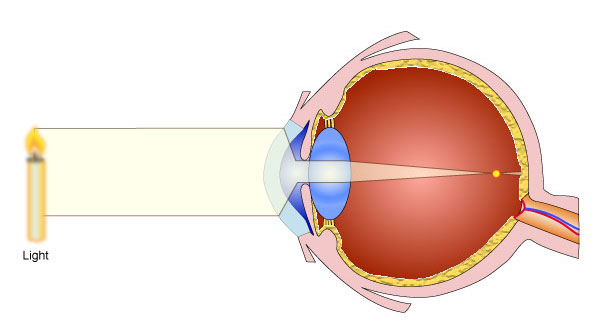 |
| A person who is short sighted can focus clearly on near objects but cannot focus on distant objects. This is because the eyeball is too long. Light from distant objects is focussed at a point in front of the retina resulting in a blurred image. |
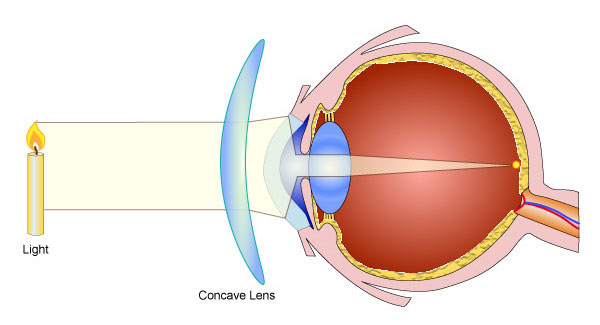 |
| This defect can be corrected by wearing a concave (diverging) spectacle lens. The rays of light from a near object are diverged before entering the eye so that the cornea and eye lens can direct the focal point onto the retina. |
